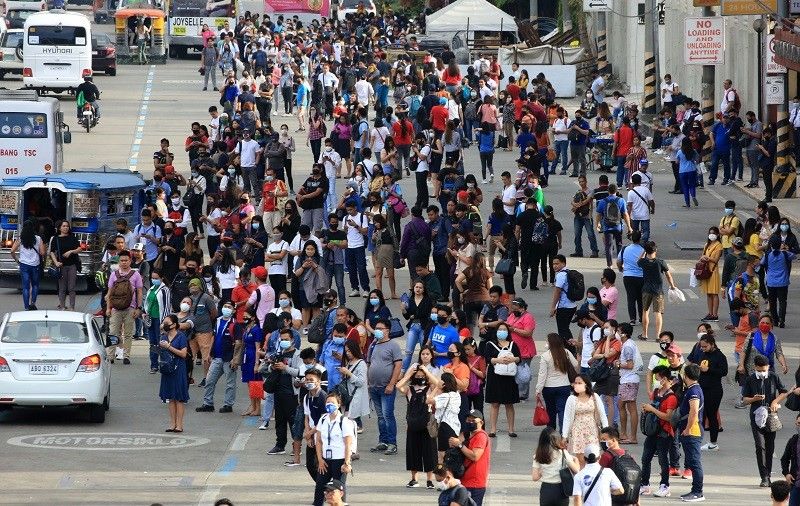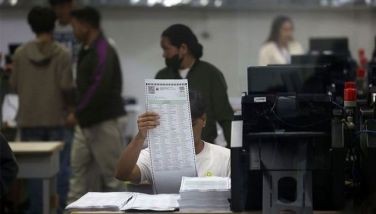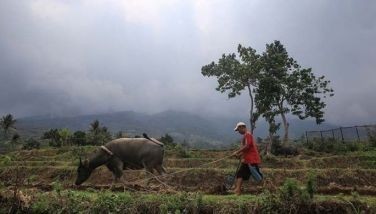A few things COVID-19 data from the Department of Health don't show

MANILA, Philippines — It has been 50 days since the Philippines saw its first confirmed case of COVID-19, which was also around the time that the country first obtained the diagnostic capacity to test for the pathogen that causes the disease.
RELATED: First novel coronavirus case in the Philippines confirmed | Philippines now capable of testing samples for novel coronavirus — DOH
Since then, only about one in every 100,000 Filipinos have been tested for COVID-19.
The Department of Health’s live COVID-19 Case Tracker shows the latest breakdown of local cases, as well as indicators like persons under investigation (PUIs), persons under monitoring (PUMs), recoveries, deaths and tests conducted.
Those classified as PUIs exhibit related symptoms but are only tested if they had a close encounter with a confirmed COVID-19 patient, belonged to the elderly cohort, recently traveled to a country with a large rate of infection or developed graver symptoms such as a severe respiratory infection. If not, they are sent home without hospital admission for home care and self-quarantine.
PUMs, meanwhile, are suspected potential cases who may have been in contact with a contagious patient but do not qualify for testing as they do not show any symptoms. They are similarly advised to undergo a 14-day quarantine, isolated even from their family.
Based on the latest count, there are 307 confirmed COVID-19 cases in the Philippines, including 19 deaths and 13 recoveries.
While the figure might seem reassuring compared to the alarming number of cases in countries like China, South Korea, and Italy — which collectively account for more than half (55.95%) of the 234,073 confirmed global cases tallied by the World Health Organization — it is because these states are also the ones which conducted the most tests.
“We see that countries with higher rates of confirmed cases tend to be also countries where a larger share of the total population has been tested,” Oxford-based publication Our World in Data reported.
RELATED: LIST: Confirmed COVID-19 cases in the Philippines
Meanwhile, the local Research Institute for Tropical Medicine based in Muntinlupa — where all laboratory tests to confirm COVID-19 are held to date — has a testing capacity of 300 samples per day, according to the WHO situation report in the Philippines dated March 11.
However, the latest Health Department official data show that only 1,395 tests have been conducted in the Philippines, at an average of 28 tests per day since the first lab confirmation of COVID-19 on January 30.
Against the country’s population of 106,651,922 (2018 World Bank figure), that means only about 1 in every 100,000 Filipinos or 13 in every million have been tested for COVID-19.
“Testing allows infected people to know that they are infected. This can help them receive the care they need, and it can help them take measures to reduce the probability of infecting others,” Our World in Data said.
“Unfortunately, the capacity for COVID-19 testing is still low in many countries around the world. For this reason we still do not have a good understanding of the spread of the pandemic.”
Cramming test capacity
The Philippines' health department on Wednesday projected that as many as 75,000 new local cases could be reported in two to three months if the spread of the virus is not contained, citing the estimates of health authorities and Filipino epidemiologists.
RELATED: COVID-19 cases in the Philippines could reach 75,000 in months if not contained — DOH
However, this would mean confirming between 833 to 1,250 cases of COVID-19 in the Philippines daily for the said time span, aside from those who will be tested and result negative for the pathogen.
Of the almost 1,400 Filipinos tested so far, a total of 307 were confirmed to have the disease, providing a current rate of 22% or roughly 1 in 5 returning positive tests.
If the present rate of COVID-19-positive results is applied, local health authorities would need to test around 4,000 to 6,000 Filipinos daily to compare present circumstances with its 75,000 estimate.
Hence, local detection efforts or diagnostic capacity must be multiplied.
“You cannot fight a fire blindfolded. And we cannot stop this pandemic if we don’t know who is infected. We have a simple message for all countries: test, test, test,” WHO Director-General Tedros Adhanom Ghebreyesus said on Monday.
The WHO has shipped almost 1.5 million tests to 120 countries and is working with companies to increase the availability of tests for the most vulnerable.
However, it acknowledged that many countries are not equipped to detect COVID-19, only recommending testing contacts of confirmed cases if they show symptoms during the pandemic.
“[W]e recognize that many countries have already exceeded their capacity to care for mild cases in dedicated health facilities. In that situation, countries should prioritize older patients and those with underlying conditions,” the director-general said.
Double standards in criteria
Despite the scarcity of COVID-19 tests in the country, Filipinos pointed out that government officials have been able to slip through the cracks of the health department triage system, tool to determine which of the thousands of potential cases are tested immediately or turned down.
RELATED: A closer look at DOH’s triage system and why politicians, officials are getting tested for COVID-19
Health Undersecretary Maria Rosario Vergeire on Tuesday said that government officials who were allowed to be tested despite being asymptomatic or showing no symptoms is due to discrepancies in the current and previous triage system being implemented.
“When the tests were conducted, especially on our higher officials, the decision tool or triage had not been revised at the time...So they were still classified as PUIs under the criteria,” Vergeire said.
The DOH on March 10 released an "updated" algorithm for triage of patients with possible infection in health care facilities.
However, an earlier “decision tool” shown in a DOH advisory dated January 30 does not recommend that public officials are tested.
It only provides criteria such as fever greater than or equal to 38 degrees celsius (current or history), respiratory infection (cough and/or colds), travel history for the past 14 days in China, and history of exposure.
The said combination of factors were used to evaluate if suspected cases will be classified as PUM or PUI, with specimens only collected from the latter for submission to the RITM.
- Latest
- Trending



































